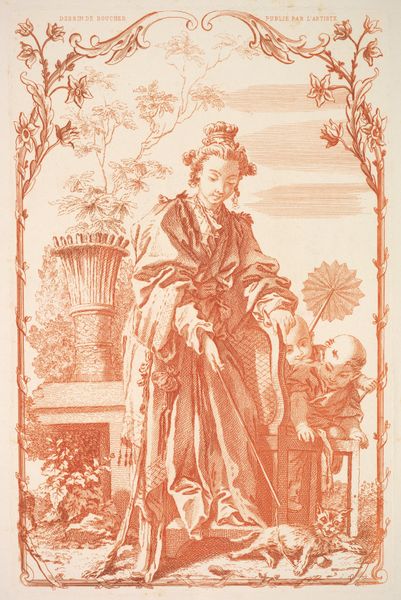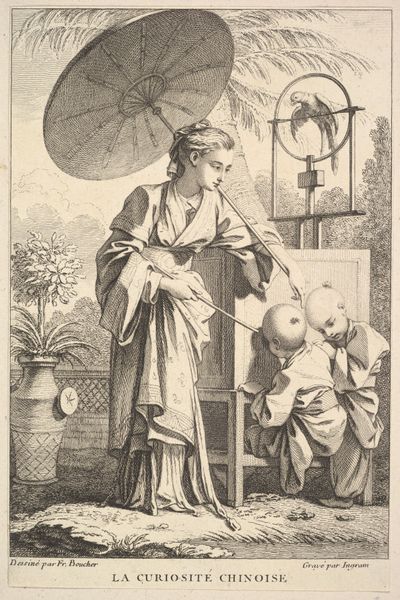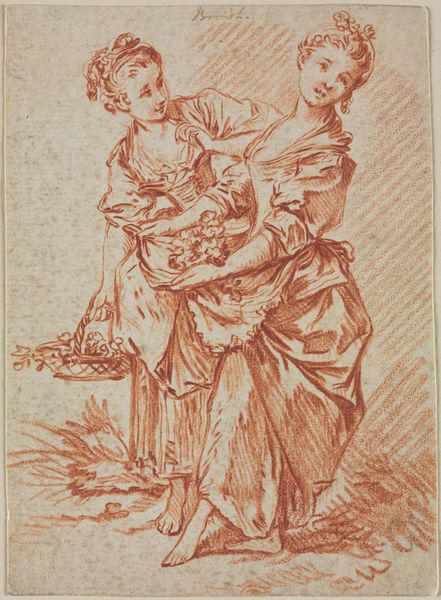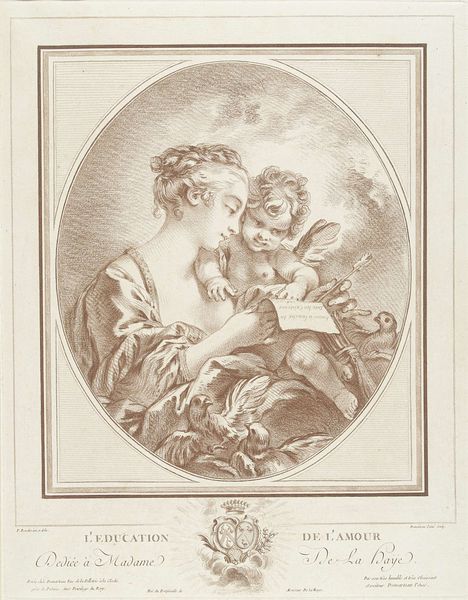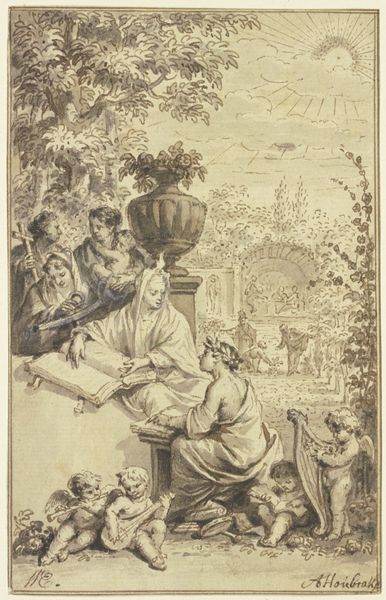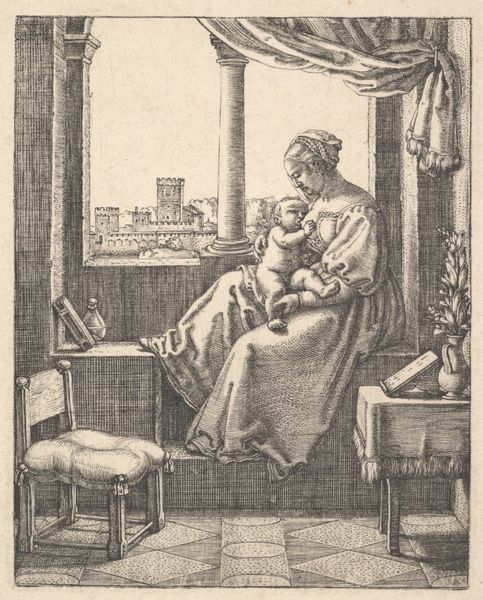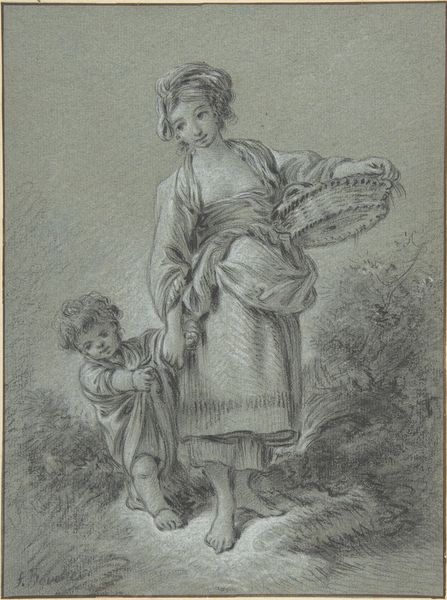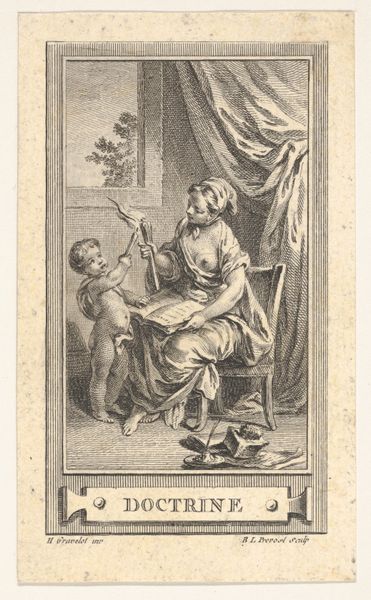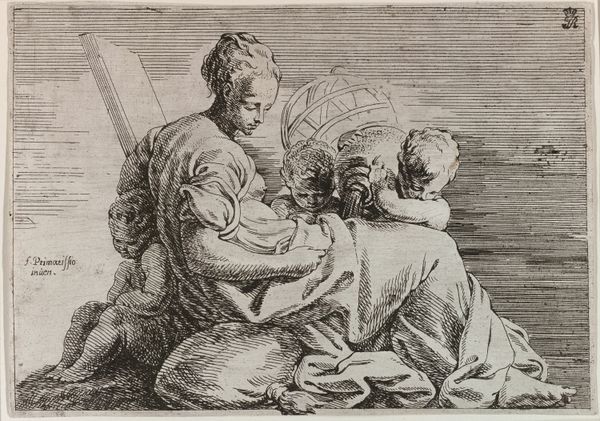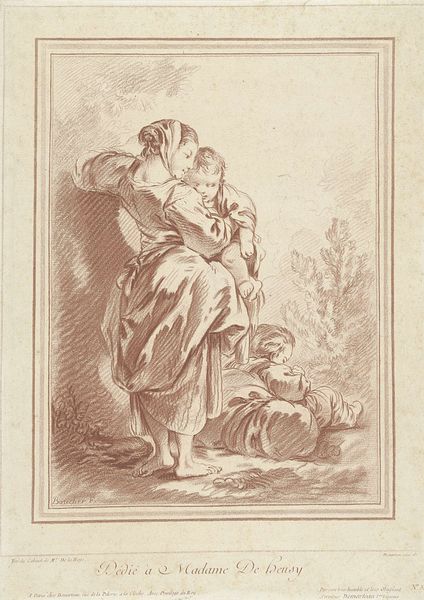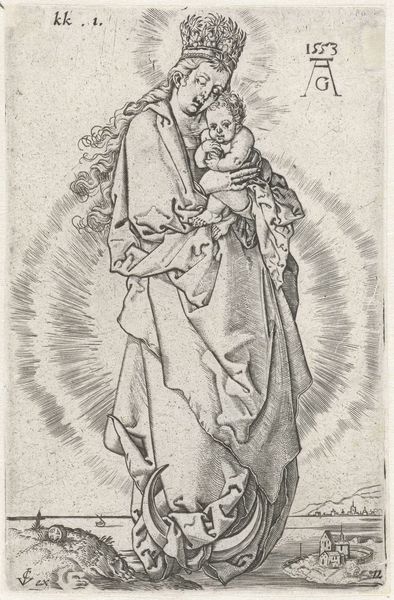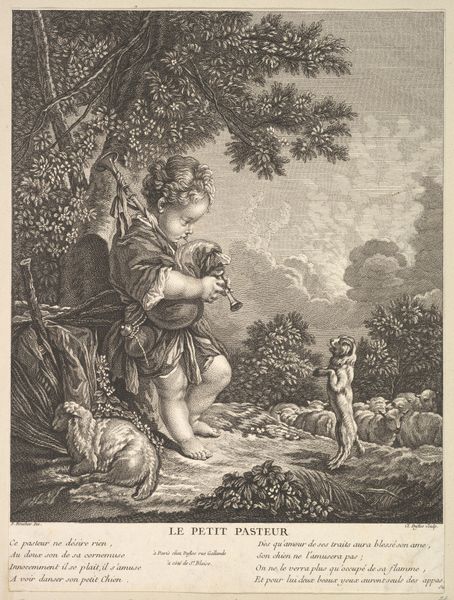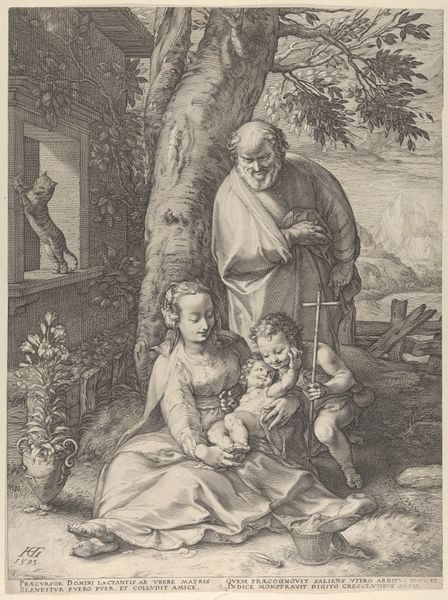
A Woman and Children Playing with a Chinese Gong 1800 - 1900
0:00
0:00
Dimensions: sheet: 15 9/16 x 11 5/16 in. (39.5 x 28.8 cm)
Copyright: Public Domain
Curator: Take a look at "A Woman and Children Playing with a Chinese Gong," created sometime between 1800 and 1900, and presently housed at the Metropolitan Museum of Art. The artist here is François Boucher. Editor: It's striking. The monochromatic palette gives it a somewhat classical, almost nostalgic feel, despite the seemingly lighthearted scene. The rendering looks rather mechanical—do we know anything about the printing? Curator: The artwork is an engraving and that mechanical feel is because of this reproduction process, lending itself to wider distribution. Consider the Rococo style, with its playful orientalist themes and delicate details that Boucher clearly embraces. This is more than just a simple portrait; it attempts to convey a story. Note the visual cues, like the "Chinese" clothing, the musical instrument, and even the surrounding flora. Editor: Right, orientalism became this whole complex industry and a tool for exoticizing and "othering" non-European cultures for European audiences. The engraving material allowed him to participate in this industry and in that time, so an analysis of the pigments or layering isn't really relevant here; it is more of an intellectual problem. Curator: Absolutely, the woman is wearing an imagined version of Asian garb that presents, really, a cultural fantasy of the time. Symbols associated with wealth and supposed Eastern mysticism are presented without nuance. It creates an atmosphere where Europeans believed themselves worldly just for appreciating art, nevermind deeply engaging with non-western people or culture. Editor: And it does so using mass production. Each printed copy could perpetuate such misconceptions. You can trace this directly back to labor practices too. Consider the etchers, the printers, and the distributors all involved in creating and spreading this visual language of orientalism. Curator: Seeing it framed this way prompts a deeper reflection on cultural exchange versus cultural appropriation. Thank you. Editor: The materials aren't simply inert things but carriers of historical actions, social narratives, economic value, and complex social power relations that helped define world cultures through commodity and visual object, rather than intercultural engagement.
Comments
No comments
Be the first to comment and join the conversation on the ultimate creative platform.
